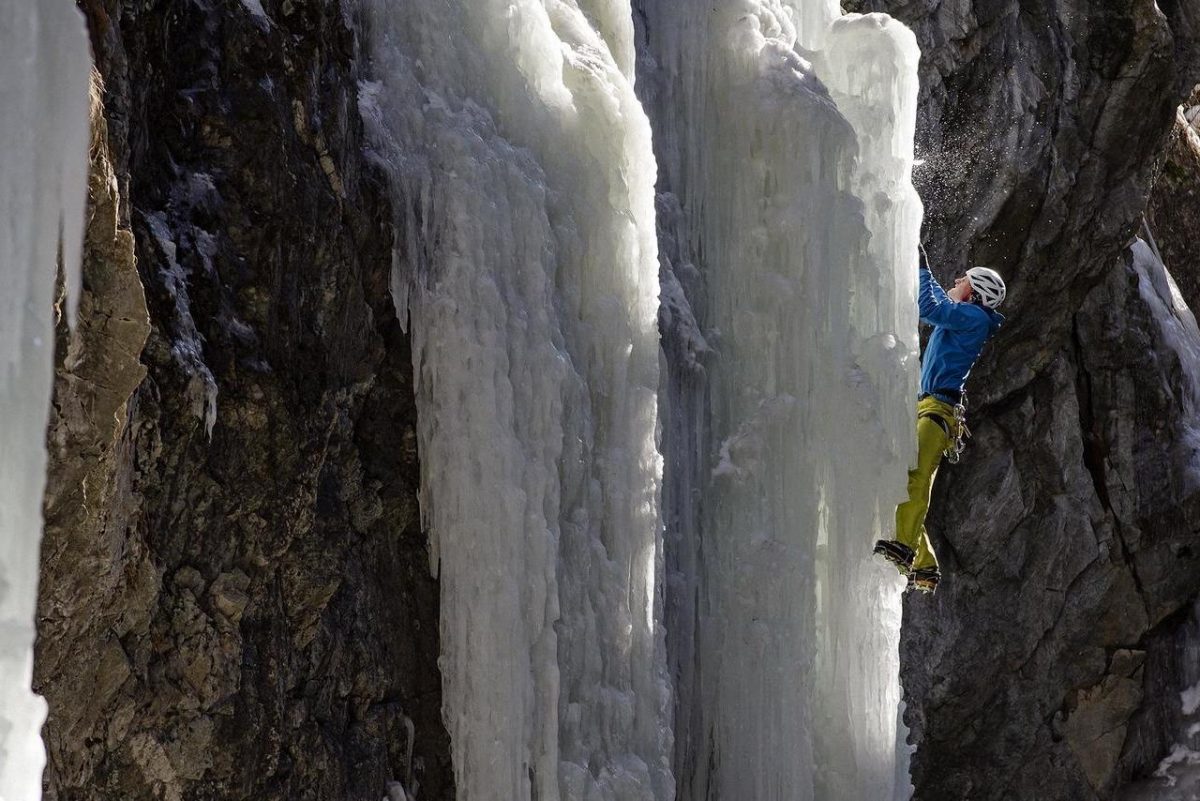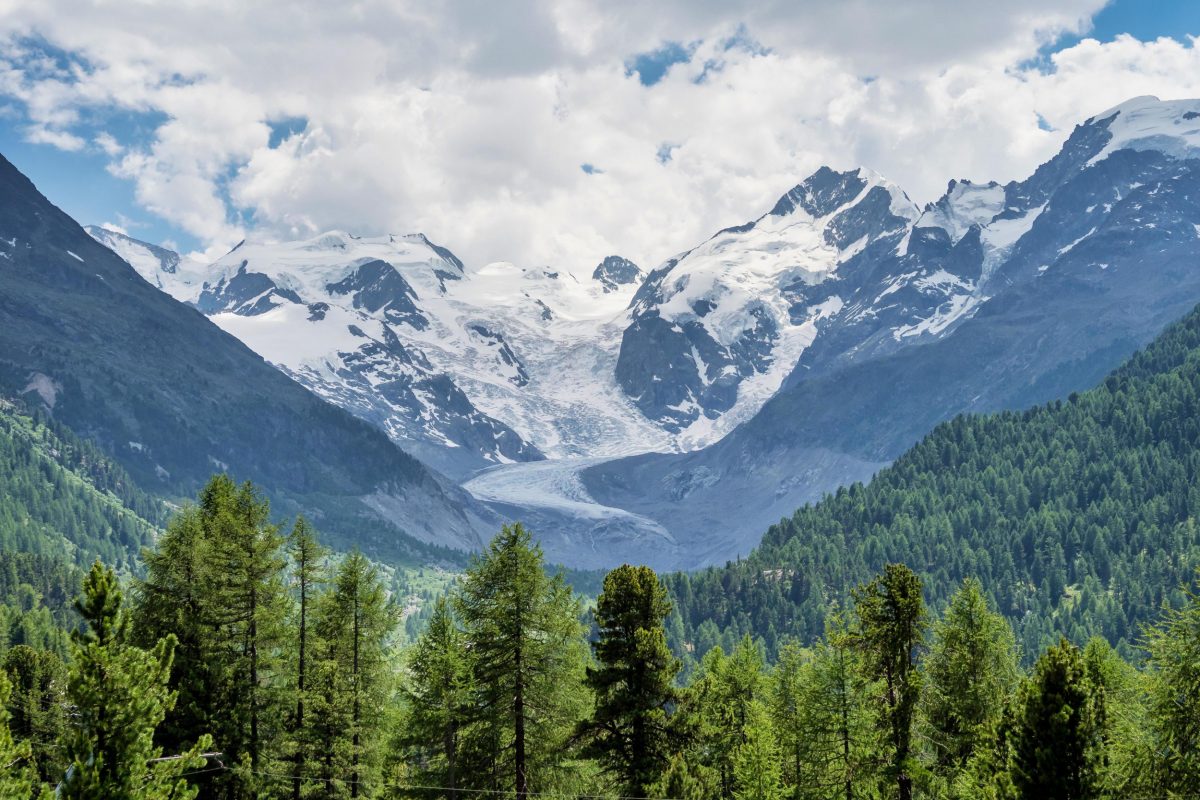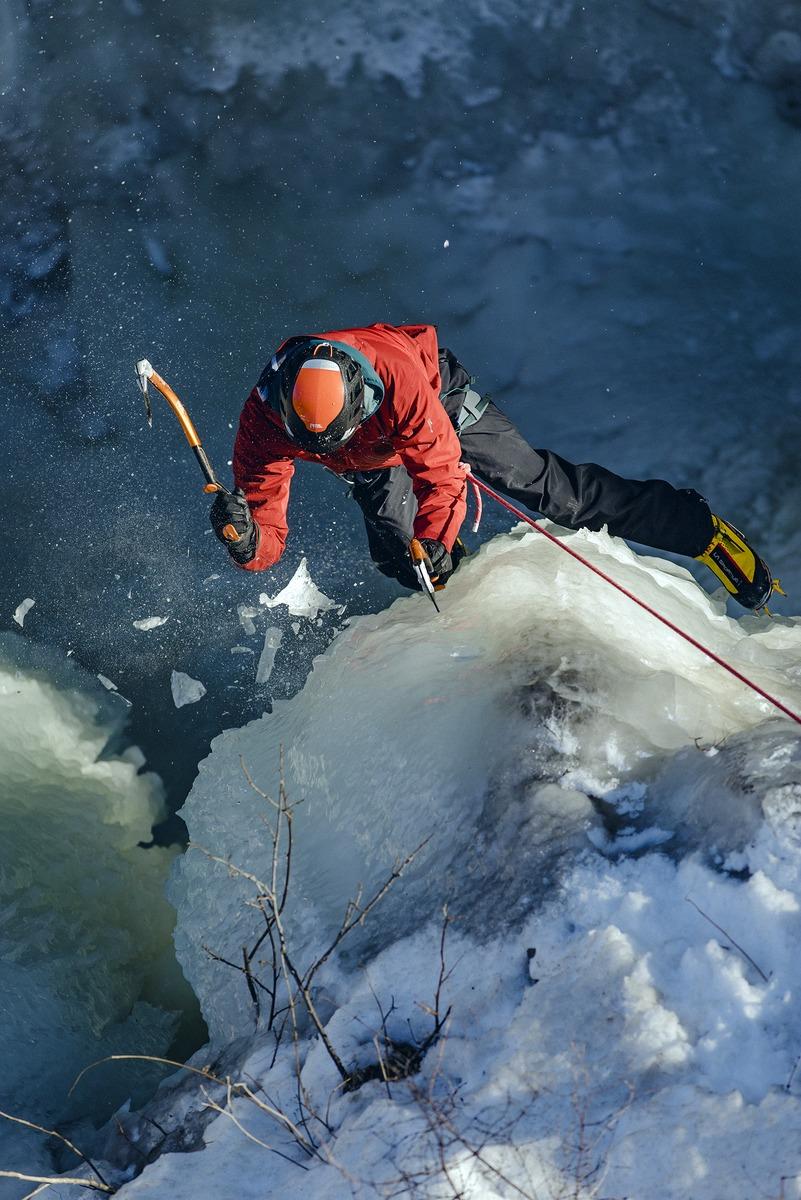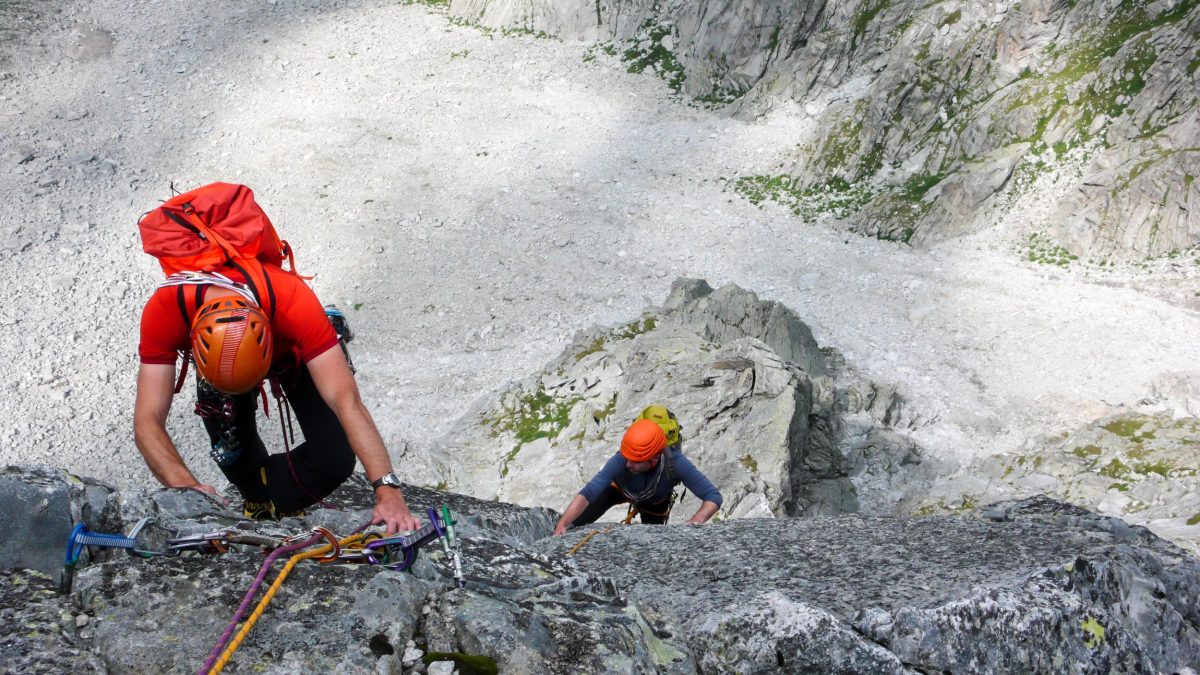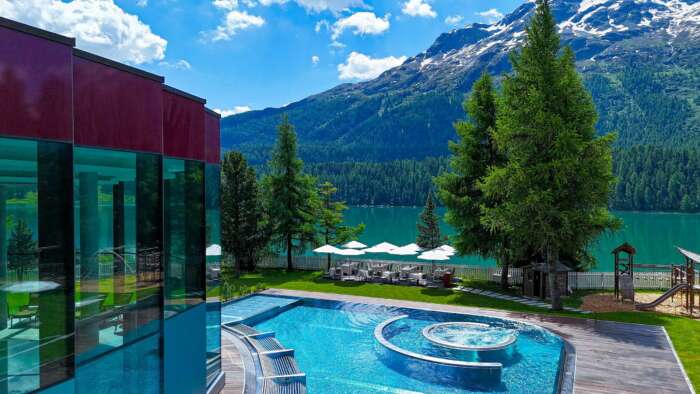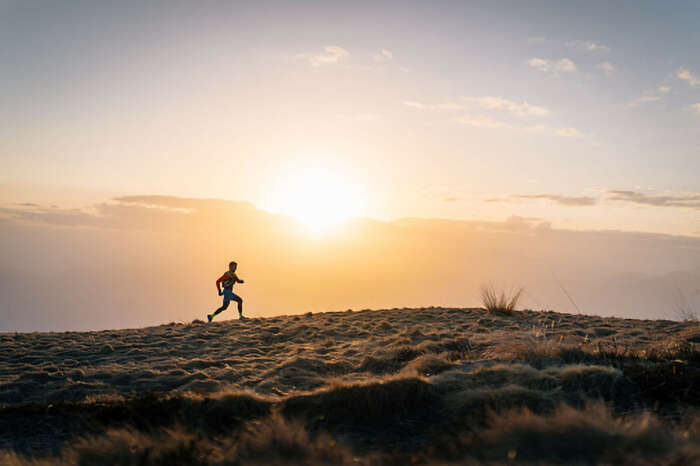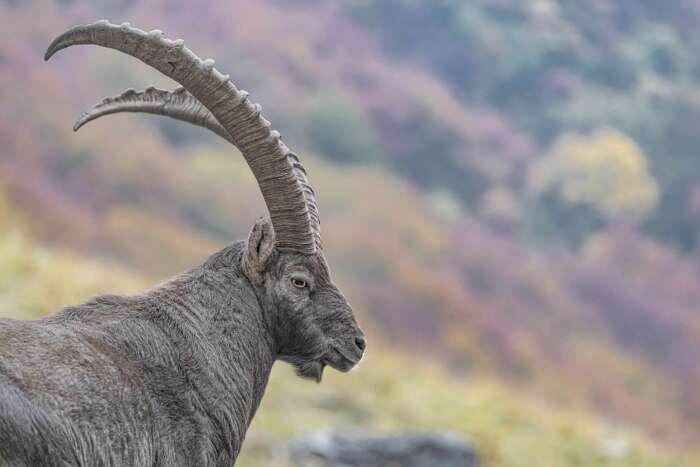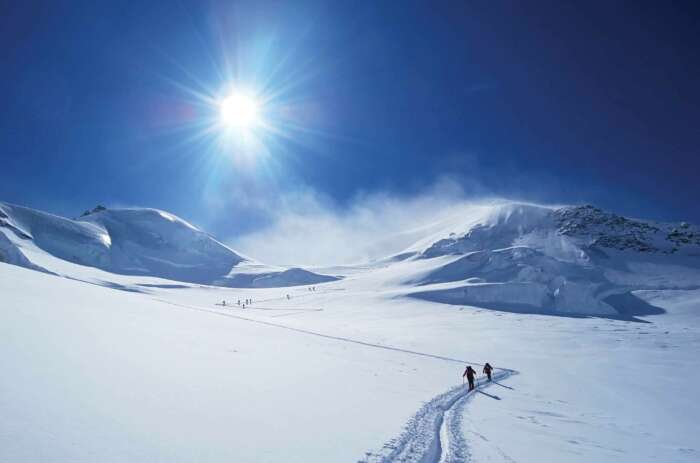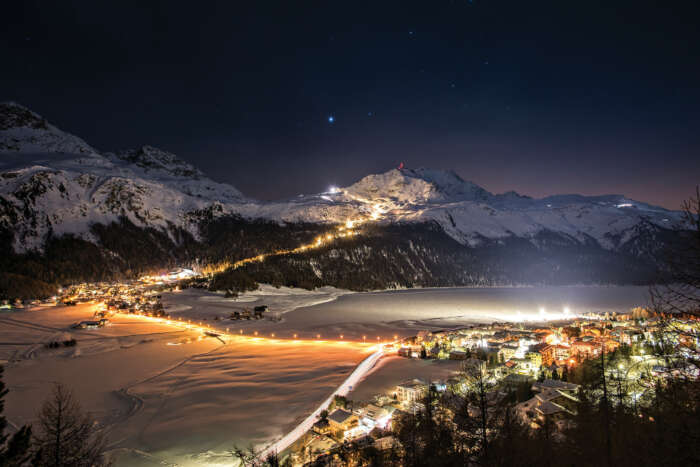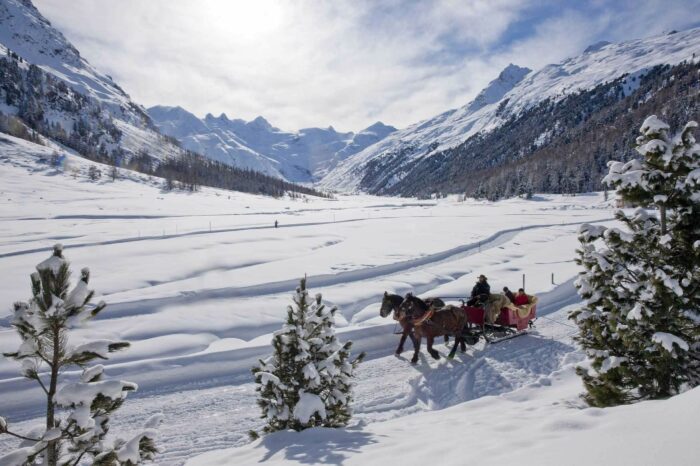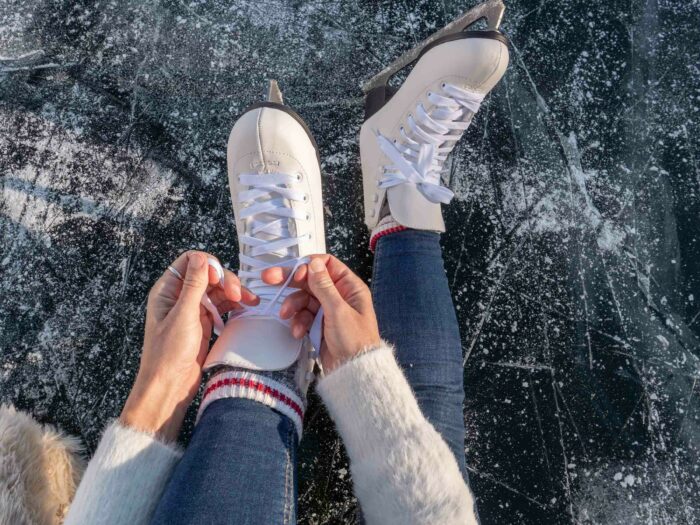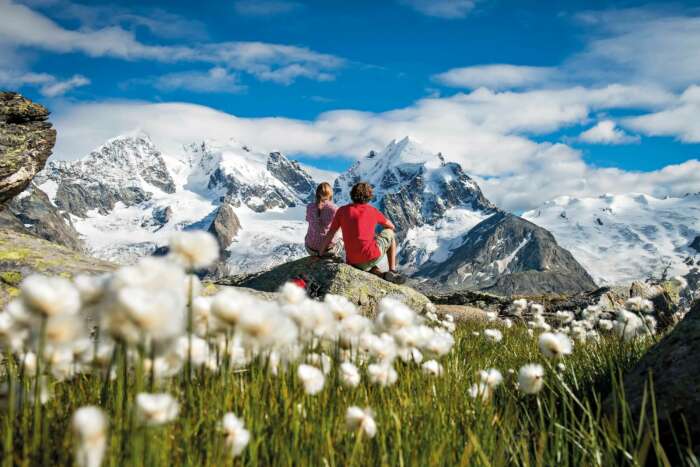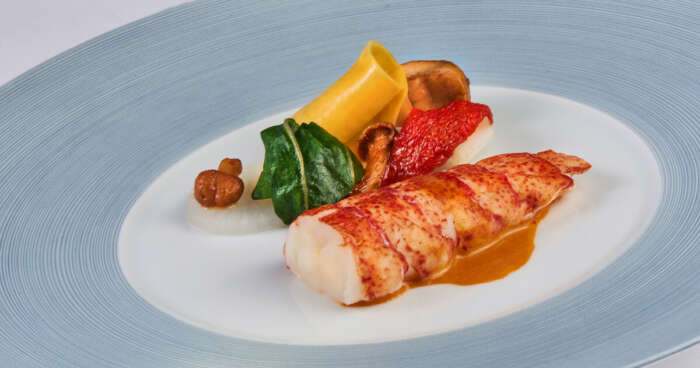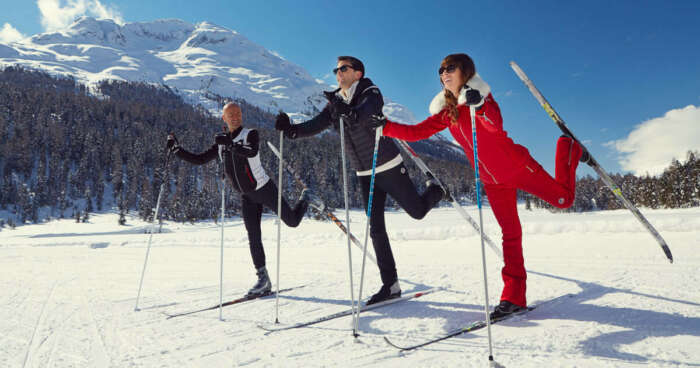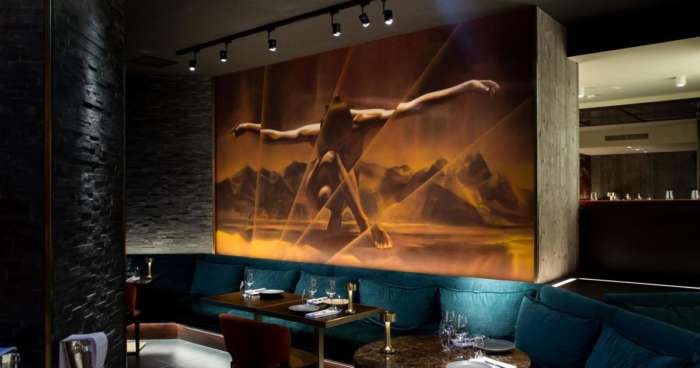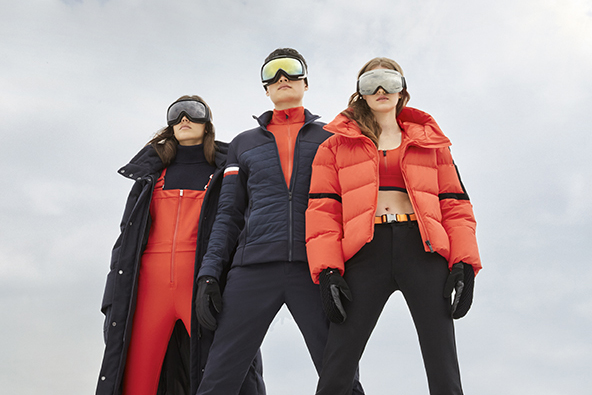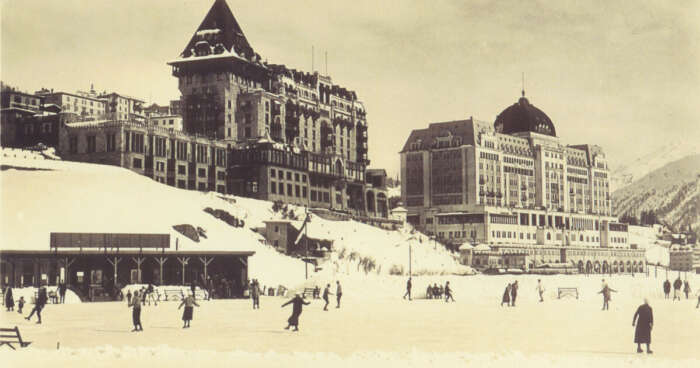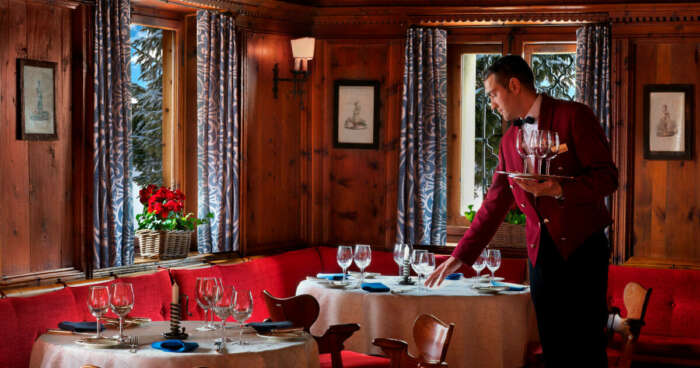Imagine a crystal-clear winter’s day high in the Alps. Pristine snow and ice glisten in the sunlight. A glorious landscape of lakes, glaciers, forests and valleys stretches for miles in every direction and the pure mountain air is as intoxicating as champagne. No wonder you feel on top of the world.
You don’t have to only imagine this, of course. Visiting St. Moritz and the Engadin is the perfect opportunity to experience the unique excitement and pleasure of climbing, something that never loses its appeal for Gian Luck.
Gian is a mountain guide and manager at Bergsteigerschule Pontresina, which is less than 10 kilometres (six miles) away from St. Moritz and is the oldest climbing school in the canton of the Grisons. You could say that climbing is in his blood: “My father was a mountain guide, so our family climbed in our free time from when I was three or four,” he explains. “Living and growing up in the mountains meant that outdoor activities such as climbing, skiing and snowboarding are a big part of my life. I became a mountain guide because I wanted to be in the mountains as much as possible.”
The history of Alpine climbing
Gian, who became a guide in 2006, is part of the school’s large permanent team of experts (boosted by around 20 freelance guides at the busiest times). They run a programme of activities and courses, as well as creating bespoke sessions tailored to individual requirements across a range of climbing and winter sport disciplines.
The Alps have been associated with mountaineering since it was first formally recognised as an activity almost two centuries ago. The world’s first mountaineering club was founded in 1857 in London and was named the Alpine Club in honour of the awe-inspiring mountain range where its original members played a pivotal role in the development of Alpine climbing.
Some 160 years later, the attraction of the Alps is as strong as ever, though climbing has evolved and diversified. “Mountaineering itself combines rock and ice climbing,” says Gian. “Rock climbing is something you can do indoors – most bigger cities will have an indoor climbing gym – and sport climbing is a form of rock climbing, with set routes and fixed anchor points. There is a climbing gym 20 minutes from St. Moritz, which is good for winter training. When the weather is bad, that is the best place to go.”
Ice climbing in the Engadin
There are also around 20 climbing gardens in the Engadin offering challenges for experienced climbers, as well as somewhere for those new to the sport to build confidence. Gian says they are great places to climb safely outdoors and to get comfortable with climbing moves and heights.
In the Alps, winter brings another option: ice climbing. This involves climbing on snow and the ice of glaciers or ice falls (frozen waterfalls) using different specialist equipment, such as ice axes. There’s no need to travel far to experience ice climbing as there is multi-pitch climbing close to Pontresina.
“Climbing glaciers and ice falls is a great experience and an adventure – something that you cannot do in the gym,” says Gian. “For mountain guides and mountaineers, this is our playground.”
And it is a playground that offers something truly unique each year. Changing winter weather conditions mean the ice falls take shape in new and different ways, offering fresh challenges to regular climbers year after year. “Water doesn’t freeze in a regulated way,” explains Gian. “When the air is dry and the temperatures are low, water will freeze faster. Sometimes there are ice falls and next year, who knows?
“We had no snow until the beginning of December in 2020, but since then temperatures have stayed low and it has been really cold. With the right conditions, the ice changes and gets better, so in January and February the ice falls can be really beautiful. Depending on the weather, they will stay until mid-March in the valley and sometimes late March higher up. We offer daily ice climbing courses or you can go by yourself if you are experienced and confident.”
Beautiful landscapes
The area around St. Moritz offers much to climbers, including ‘black peak’ Piz Nair (3,057 metres / 10,030 feet) and Piz Corvatsch (3,451 metres / 11,322 feet), while the Diavolezza mountain viewpoint (2,973 metres / 9,754 feet) is famous for panoramic views said to be among the most beautiful in the Alps.
Many are drawn to the dramatic Bernina Range in the eastern Alps, also close to St. Moritz. The range offers challenging peaks including 4,049-metre (13,284 feet) Piz Bernina, the highest summit in the range. The Biancograt route to the summit of Piz Bernina is one of Gian’s favourites, although he says the people you are with are more important than the route itself.
“Climbing here is very, very different,” he reflects. “In the mountains, you are surrounded by rocks and glaciers. In the climbing parks, you also have wonderful landscapes. Winter or summer, climbing is a great activity.”
It is also an activity enhanced by unexpected encounters with the natural world. In the mountains the chance sighting of an ibex with its spectacular horns or a golden eagle soaring overhead further enriches an already unforgettable experience. Gian concludes: “As mountain guides, what we really enjoy is people experiencing an adventure surrounded by nature at its best – the beautiful landscapes and the wildlife.”
For more information about climbing in St. Moritz, contact Bergsteigerschule Pontresina. Alternatively, speak to the Badrutt’s Palace concierge or visit engadin.ch.
